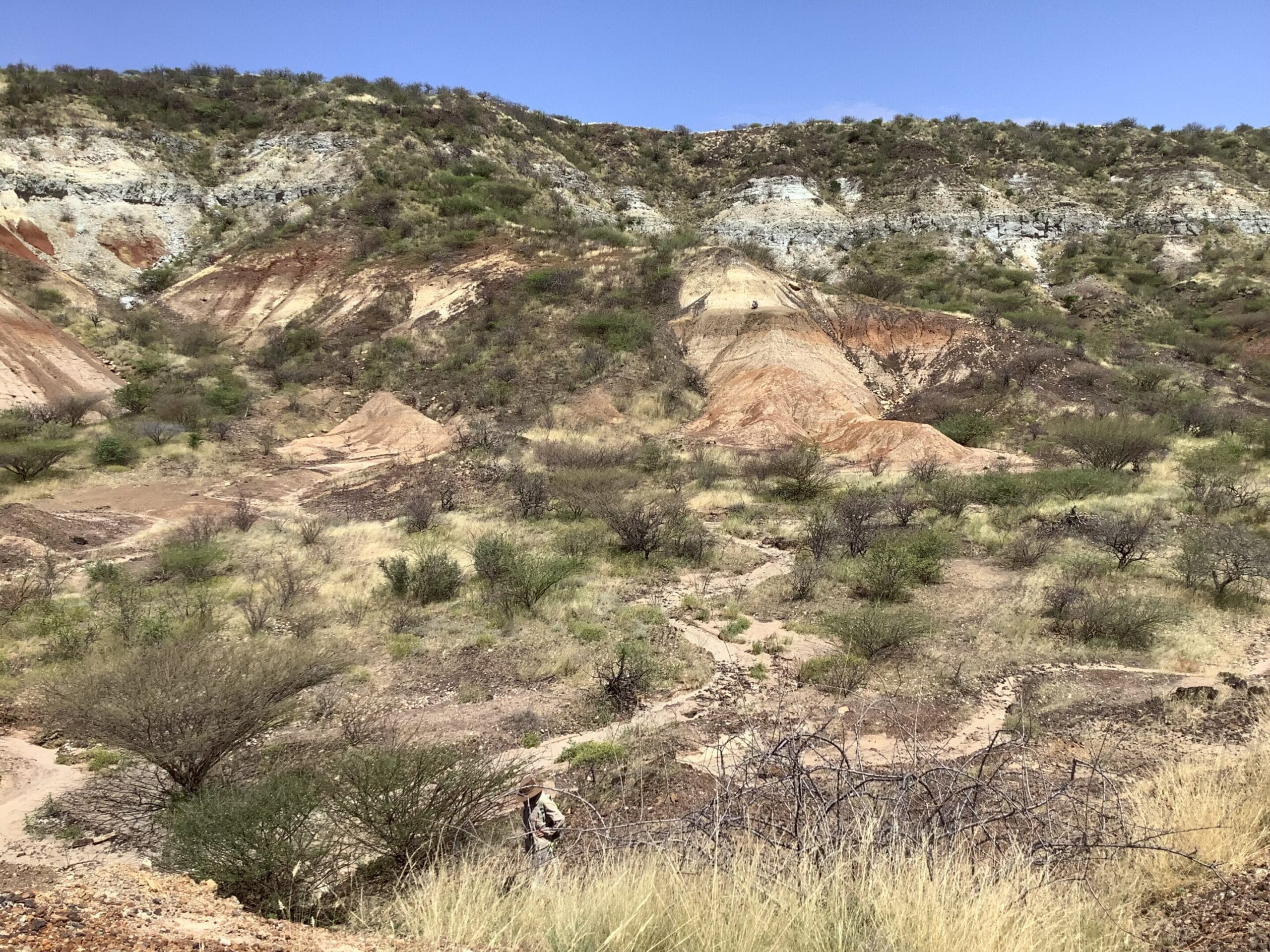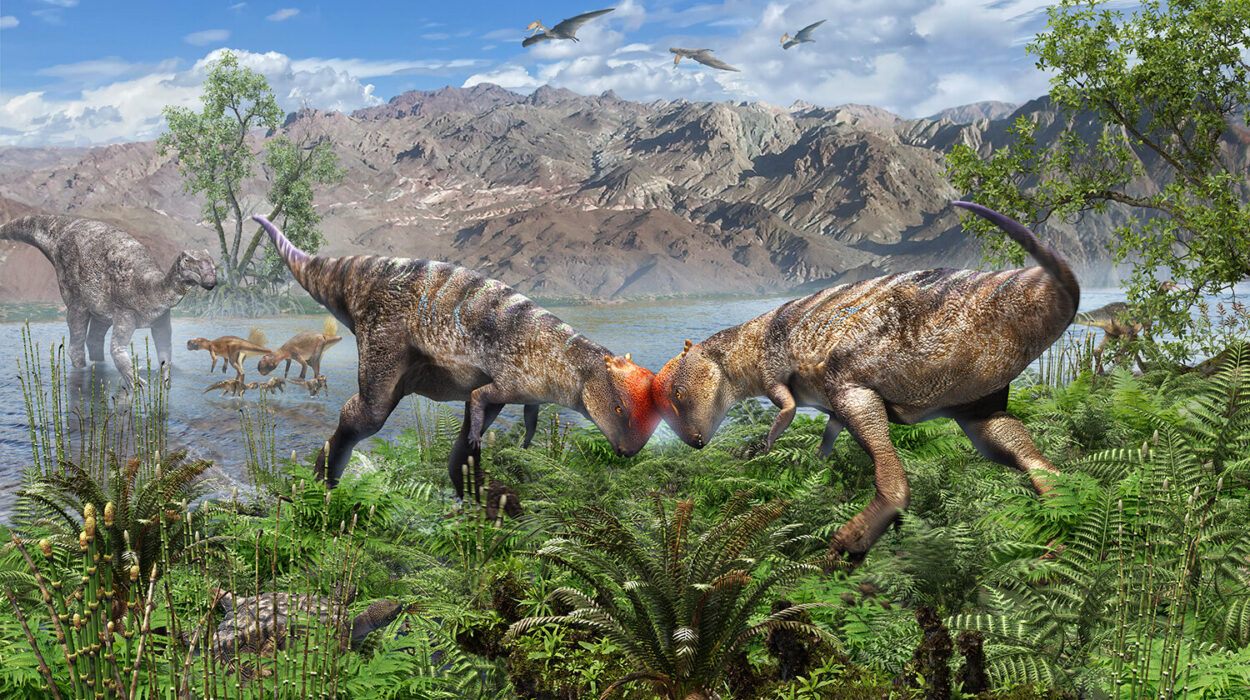In the searing heat of Kenya’s Rift Valley, where rust-colored dust coils around the acacia trees and the distant silhouettes of elephants march against the horizon, scientists have unearthed a molecular miracle—a discovery that rewinds the biological clock by millions of years.
Inside fossilized teeth from creatures long vanished from Earth, researchers have found ancient proteins dating back 18 million years, pushing the limits of what science believed possible. These microscopic fragments are not just remnants of long-dead animals—they’re time capsules, carrying secrets about how ancient elephants, rhinos, and perhaps even our own ancestors once lived, thrived, and evolved.
“This is field-changing,” said Daniel Green, lead author of the new study published in Nature and field program director in Harvard’s Department of Human Evolutionary Biology. “Nobody’s ever found peptide fragments that are this old before. It’s kind of shocking.”
Until now, the oldest known ancient proteins extracted from fossils were roughly 3.5 million years old. This new research has shattered that record by a factor of five—revealing that tooth enamel may be a far more durable vault of biological history than anyone imagined.
The Rocks Inside Our Mouths
Teeth, Green explains, are far more than tools for chewing—they’re geological wonders. “Teeth are rocks in our mouths,” he said. “They’re the hardest structures that any animal makes, so you can find a tooth that is a hundred or a hundred million years old, and it will contain a geochemical record of the life of the animal.”
Locked inside these enamel fortresses are chemical signatures that whisper secrets about what an animal ate, what water it drank, and even what kind of world it inhabited.
In the past, scientists assumed that mature enamel—the glossy outer shield of teeth—contained few proteins. It’s a surface built to endure, not to preserve delicate molecules. But the research team, working alongside the Smithsonian Museum Conservation Institute and the National Museum of Kenya, thought otherwise.
Using a powerful technique called liquid chromatography tandem mass spectrometry (LC-MS/MS), they probed fossilized enamel in ways no one had attempted at this scale.
“We and other scholars recently found that there are dozens—if not even hundreds—of different kinds of proteins present inside tooth enamel,” Green said. Each of these proteins tells a fragment of a story, a puzzle piece from a long-forgotten chapter of evolution.
Decoding the Molecular Diary of Ancient Giants
The team turned its attention to the ancient titans of the East African plains—early elephants and rhinos whose teeth were built for a herbivore’s life of constant grinding. Their enamel, sometimes two or three millimeters thick, provided an ample canvas for molecular exploration.
“Having thick enamel was helpful because it meant we had a lot of material to work with,” Green said.
What they found hidden within the fossilized teeth were peptide fragments, tiny chains of amino acids that together form the larger proteins shaping an animal’s tissues, metabolism, and biology. Some of these fragments had endured for 18 million years—an almost inconceivable timespan for fragile organic molecules.
The discovery wasn’t a single fleeting trace but an entire molecular archive. “There might be more information available from a group of them than just one protein by itself,” Green said. “We don’t have the full proteome of all the proteins that could have been found inside the bodies of these ancient elephants or rhinoceros, but we do have a group of them.”
That group is more than just biochemical trivia—it’s a treasure trove for paleontologists.
A New Frontier: Molecular Paleontology
These ancient peptides offer a new lens through which scientists can examine the story of life on Earth. For centuries, paleontologists relied on bones and teeth for clues about the past. The size of a tooth, the ridges on its surface, the wear from chewing—all offered hints about diet, behavior, and environment. But these physical clues could only go so far.
Now, the hidden world of ancient proteins is opening doors to molecular paleontology, allowing researchers to peer into the physiology and evolutionary history of creatures long extinct.
“This research opens new frontiers in paleobiology, allowing scientists to go beyond bones and morphology to reconstruct the molecular and physiological traits of extinct animals and hominins,” said Emmanuel K. Ndiema, senior research scientist at the National Museum of Kenya and a co-author of the paper.
Through these protein fragments, scientists can detect evolutionary relationships invisible to the naked eye. They can compare sequences between extinct species and modern animals, building phylogenetic trees that trace how species are related through time—even if an animal has no living descendants.
“We can use these peptide fragments to explore the relationships between ancient animals, similar to how modern DNA in humans is used to identify how people are related to one another,” said Kevin T. Uno, associate professor in Harvard’s Department of Human Evolutionary Biology and one of the paper’s corresponding authors.
Fossil Secrets Beyond Bones
The implications reach far beyond placing animals on a family tree. The molecular signatures hidden in tooth enamel might reveal:
- Dietary Adaptations: Which plants ancient herbivores ate, and how shifts in climate or environment shaped their feeding habits.
- Disease Profiles: Clues to past pathogens or inflammatory conditions that affected ancient animals.
- Developmental Timelines: Insights into how quickly young animals grew up, or how long they lived.
“Combined with other characteristics of teeth, we can infer dietary adaptations, disease profiles, and even age at death—insights that were previously inaccessible,” Ndiema said.
It’s a remarkable convergence of fields: paleontology, chemistry, evolutionary biology, and technology working together to resurrect lost worlds from molecules the size of dust motes.
From Side Project to Scientific Breakthrough
Perhaps most astonishing of all, this leap in knowledge began as a modest sideline. “This research began as a small side project,” Green admitted, part of a much larger effort involving dozens of institutions and researchers around the world.
“But we were surprised at just how much we found,” he said. “There really are a lot of proteins preserved in these teeth.”
It’s a testament to the idea that even in science’s overlooked corners, the next revolution might be waiting—hidden, as it turns out, in the ancient enamel of an 18-million-year-old tooth.
As the sun sets over Kenya’s Rift Valley, casting long shadows across ancient riverbeds and rocky outcrops, it’s hard not to wonder what other secrets remain locked within the stones—and the teeth—beneath our feet.
In each grain of enamel lies a silent witness to worlds long gone, ready to speak, at last, through the language of proteins.
Reference: Daniel Green, Eighteen million years of diverse enamel proteomes from the East African Rift, Nature (2025). DOI: 10.1038/s41586-025-09040-9. www.nature.com/articles/s41586-025-09040-9






